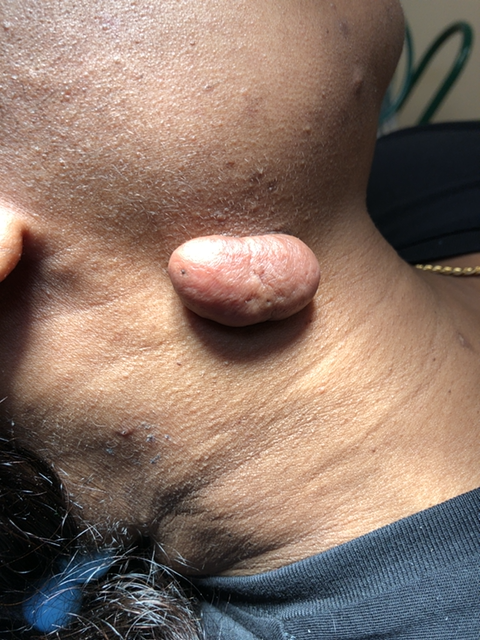Are keloids affecting your confidence? Cryoshape, an advanced cryotherapy treatment, offers a promising solution.
Our expert dermatologists at Advanced Dermatology, P.C. use this innovative technique to effectively reduce the appearance of keloids. By precisely applying liquid nitrogen, we target and destroy abnormal tissue, leaving you with smoother, more even skin.
To learn more about this scar treatment option, contact us directly or continue reading below.
Keloids are abnormal growths of scar tissue that form after an injury. Unlike normal scars, keloids extend beyond the original wound and can be raised, firm, and often itchy or painful. They can occur on any part of the body but are most common on the chest, shoulders, earlobes, and cheeks.

Cryotherapy, also known as cryosurgery, is a treatment that involves exposing the affected area to extremely cold temperatures. This causes the keloid tissue to freeze and destroy abnormal cells.
Cryoshape is a specific cryotherapy technique used to treat keloids. It involves using a specialized needle-like probe connected to a liquid nitrogen tank. This probe is inserted directly into the keloid, and liquid nitrogen is injected, freezing and destroying the abnormal tissue from within.
Key characteristics of Cryoshape:

Cryotherapy is a minimally invasive procedure performed by a dermatologist for keloids at Advanced Dermatology, P.C. The process typically involves the following steps:
Cryoshape offers a targeted and precise approach to keloid treatment, aiming to reduce the size and appearance of the keloid while minimizing potential side effects.
Cryoshape offers several advantages in the treatment of keloids:
While Cryoshape is generally considered a safe and effective treatment, potential side effects can occur. It’s important to discuss these with your dermatologist before the procedure.
Following your keloid dermatologist’s aftercare instructions is essential to minimize potential side effects and optimize treatment outcomes.
Cryoshape can be an effective treatment option for many individuals with keloids. However, it’s essential to consult with an Advanced Dermatology, P.C. dermatologist to determine if it’s the right choice for you.
Cryoshape may be a good option if:
Cryotherapy may not be suitable if:
Ultimately, the decision to undergo keloid cryotherapy should be made in collaboration with your dermatologist. Our team can assess your situation and recommend the most appropriate treatment plan for your skincare needs, helping you achieve results reflected in our before and after keloid scars treatment results.
Receive skincare tips, news and special offers!